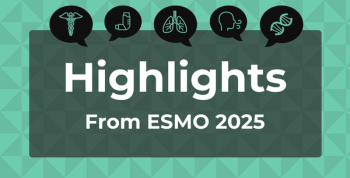
Health System Fragmentation Undermines Timely Lung Cancer Testing: Julia Rotow, MD
In this first part of an interview with The American Journal of Managed Care®, Julia Rotow, MD, thoracic oncologist at Dana-Farber Cancer Institute, discusses the critical need to test for biomarkers to afford patients the chance to benefit from recent treatment advances.
When asked about common barriers to rapid biomarker testing for patients with lung cancers, Julia Rotow, MD, explained, “Health care in this country is very complex. Patients’ care may be spread across multiple different health care systems… their treatment in oncology may be at a different place from where they actually got their original diagnosis. Some of the mundane but real barriers include simply getting access to the tumor, to the sample itself.”
Rotow serves as clinical director, Lowe Center for Thoracic Oncology; director of clinical research; and physician (thoracic oncology), Dana-Farber Cancer Institute, and assistant professor of medicine, Harvard Medical School. She moderated the panel discussion, “Value-Driven Precision: Advancing Equitable Access to Targeted and Immuno-Oncology Therapies in Lung Cancer,” at the July 17 Institute for Value-Based Medicine regional
This transcript was lightly edited for clarity; captions were auto-generated.
Transcript
Why does precision medicine uptake vary so greatly in lung cancer?
I think about optimizing therapy for patients who have a new diagnosis of lung cancer, particularly
Beyond securing adequate tissue for biomarker testing, what other common barriers delay rapid results, especially for the sickest patients?
[When] I think [about] health care in this country, I think about what makes it challenging to get results back as quickly as possible or as efficiently as possible. Health care in this country is very complex. Patients’ care may be spread across multiple different health care systems, multiple hospitals, and different clinics. That means their treatment in oncology may be at a different place from where they actually got their original diagnosis. Some of the mundane but real barriers include simply getting access to the tumor, to the sample itself, from the hospital where the biopsy is done to the clinic where the testing is going to be run or out to the central testing company where the testing will be run. That, certainly in our health care system, can lead to challenges.
There's also the issue of simply being able to run the test itself and ordering the test itself. Most commonly, this is ordered by the medical oncologist when they reach the patient, but of course, the medical oncologist is often not the first person a patient encounters when there's concern for a diagnosis of cancer or diagnosis of lung cancer. They've already been going through weeks or even months of evaluation before they actually get their diagnosis, have a firm answer to what's going on, and see an oncologist, and that may be the point at which their biomarker testing starts. Because that testing can take 2 to 3 weeks to come back, it's really hard with a serious illness like lung cancer, where we want to start therapy as often, and as quickly, as possible.
Another challenge that we encounter is our patients who are diagnosed in the hospital, our very sickest patients at diagnosis; sometimes they're actually hospitalized for symptoms of their disease or to expedite their evaluation, and then they may find out about their diagnosis after discharge from the hospital within a few days, their pathology starts coming back, or while they're still inpatient. There are still quite a few barriers to sending some of these more complex, modern genomic testing methods like next-generation sequencing, which may be very difficult to send in an inpatient setting and are usually ordered by the outpatient team. Yet, we now have rules that limit the initiation of these therapies and testing, like 14-day rules. Our patients can't wait 14 days to even start a 3-week timeline on a test, so I think for us in practice and for our patients, these sorts of restrictions on ordering the test as soon as you know it's going to be relevant are a real barrier to effective initiation of therapy.
Newsletter
Stay ahead of policy, cost, and value—subscribe to AJMC for expert insights at the intersection of clinical care and health economics.







































